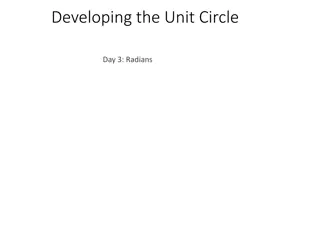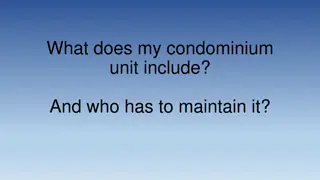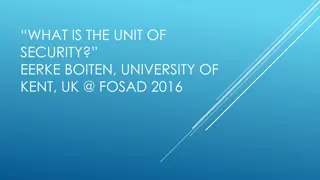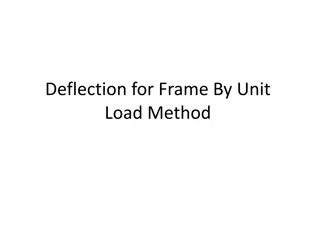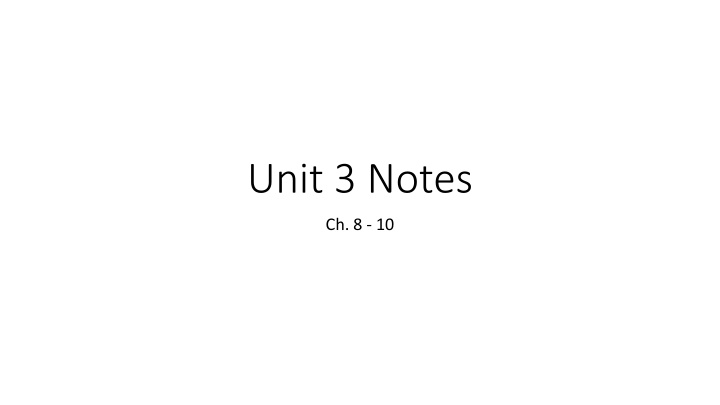
Behavior Change Through Conditioning Models
Explore the concepts of classical and operant conditioning, including Pavlov's classical conditioning and Skinner's operant conditioning. Learn about associative learning, reinforcement, punishment, and different conditioning techniques. Dive into the theories of behaviorism and how stimuli and responses are paired to bring about behavioral change.
Download Presentation

Please find below an Image/Link to download the presentation.
The content on the website is provided AS IS for your information and personal use only. It may not be sold, licensed, or shared on other websites without obtaining consent from the author. If you encounter any issues during the download, it is possible that the publisher has removed the file from their server.
You are allowed to download the files provided on this website for personal or commercial use, subject to the condition that they are used lawfully. All files are the property of their respective owners.
The content on the website is provided AS IS for your information and personal use only. It may not be sold, licensed, or shared on other websites without obtaining consent from the author.
E N D
Presentation Transcript
Unit 3 Notes Ch. 8 - 10
Ch. 8 Learning Learning: A relatively permanent change in behavior due to experience. Classical Conditioning: Pavlov Operant Conditioning: Skinner Modeling: Bandura
Associative Learning Classical Conditioning and operant conditioning are also known as associative learning (when two stimuli or a stimuli & response are paired together) Both Classical Conditioning & Operant Conditioning are under the umbrella of Behaviorism
Classical Conditioning - Pavlov UCS (US) Unconditioned Stimulus UCR (UR) Unconditioned Response NS Neutral Stimulus CS Conditioned Stimulus CR Conditioned Response UCS creates a UCR NS has no response CS creates a CR
CC - Continued Acquisition When the NS & UCS are paired Extinction The CS no longer creates the CR. AKA The diminished responding of the CS no longer signaling the impending the UCS. Spontaneous Recovery The CS once again creates the CR. AKA the reappearance of a weakened CR after a pause Generalization When a similar stimulus to the CS creates the CR Discrimination When only the CS creates the CR Pg 321 - 325
CC - Continued Higher Order Conditioning: When a 2ndCS is conditioned to the first CS to create a new CR. Counterconditioning: When a positive stimulus is used to eliminate a negative conditioned response. Aversive Counterconditioning: When a negative stimulus is used to eliminate a negative conditioned response
Operant Conditioning - Skinner Thorndike s Law of Effect: Rewarded behavior is likely to recur Operant Chamber (Skinner Box): Animal presses a bar or key for food Operant Conditioning is based on reinforcement and punishent
Reinforcement & Punishment Reinforcement increases a behavior Punishment decreases a behavior Positive refers to giving Negative refers to taking
Reinforcement & Punishment Contd Positive Reinforcement: Increase by giving Negative Reinforcement: Increase by taking Positive Punishment: Decrease by giving Negative Punishment: Decrease by taking Give Take NR NP Increase Decrease PR PP
Shaping; Primary & Secondary Reinforcers Shaping: Guiding behavior towards successive approximations (step by step towards the desired behavior) Primary Reinforcer: Innate reinforcer that satisfies a biological need Secondary Reinforcer: (Conditioned): Learned and associated with pleasure: Tokens, coupons, or cc connections
Reinforcement Schedules Continuous (Fixed): Patterned Intermittent (Variable): Random Ratio: Based on person Interval: Based on Time
Schedules Contd Fixed Ratio: Reinforcement occurs after a set number of responses Variable Ratio: Occurs after an unpredictable number of responses Fixed Interval: Occurs after a fixed time period Variable Interval: Occurs randomly during time periods
Cognition & Operant Conditioning Latent Learning: Learning only becomes apparent when there is incentive to demonstrate it (pg. 334) Cognitive Map: A mental representation of a map
Intrinsic v Extrinsic Motivation Intrinsic: Desire to perform behavior for one s own sake Extrinsic: Desire to perform behavior for external reward
Observational Learning Modeling (Bandura) Bobo Doll Experiment: Children more likely to be aggressive after having watched children already be aggressive Mirror Neurons: (Frontal Cortex): Provide neurological basis for observational learning
Prosocial Behavior Prosocial behavior: Positive, helpful models who exemplify altruism can prompt this in others
Unscramble OBYS SABT TYAR CAPEE CALPE YZRET
Learned Helplessness Seligman (LH): Experimented with dogs who were classically conditioned with a bell and shock. Then shocked them on one side of a fence.
Ch. 9 - Memory Memory: Ability to store and retrieve information Flashbulb Memory: A clear memory of an emotionally significant moment or event 3 Stages: Encoding, Storage, Retrieval
3 Stages Information Processing Encoding: Taking memory in Storage: Holding memory over time Retrieval: Getting information out of memory
3 Stages of Memory Sensory: Instantaneous or Subconscious Short-Term: Holds memory for a brief period of time (5-9 items, up to a few minutes) Working Memory: A newer understanding of short-term memory Long-Term: Relatively permanent and limitless storage of information
Encoding Automatic Processing: Absorbing information with no effort Effortful Processing: Absorbing information that includes attention and effort Rehearsal: Conscious Repetition Spacing Effect: Distributing study over time Serial Position Effect: Remembering first and last items of a list better than the middle
Encoding Meanings Visual: Encoding Picture Images Acoustic: Encoding of sound, particularly words Semantic: Encoding the meaning of words (hit)
Visual Encoding Imagery: Using mental pictures to remember Mnemonics: Memory aids using acronyms Chunking: Organizing into groups or familiar units
Sensory & Long Term Memory Iconic: Subconscious visual memory Echoic: Subconscious auditory memory Long Term Potentiation (LTP): Neural basis for long term memory
Implicit & Explicit Memory Implicit (Non-declarative) (Cerebellum): How to do something Explicit (declarative) (Hippocampus): Facts, Memories, Events Priming: Activation of associations d j vu: French for already seen. The sense that one has experienced this before Mood Congruent Memory: The tendency to recall information consistent with one s mood
Storage Decay Decay: The forgetting of information Ebbinghaus Retention Curve: New information fades and then levels; the more one studies initially, the less the information fades Proactive interference: Disruptive effect of old information on new information (Old blocks new) Retroactive Interference: Disruptive effect of new information on old information (Old blocks new) Repression: Subconsciously pushing down painful information
Memory Construction Misinformation Effect: Incorporating misleading information into memory Source Amnesia (Pg. 384): Attributing a memory to the wrong place or time, including an imagined memory
Ch. 10 Thinking & Language Cognition: All activities associated with thinking Concept: Mental grouping of similar items Prototype: Best example of a category Algorithm: Methodical, logical method of solving a problem and guaranteeing a solution Heuristic: A simple, rule of thumb strategy -Representative: A prototype, stereotype thought to solve a problem -Availability: Using information in memory to make a decision
Obstacles to Problem Solving Confirmation Bias: A tendency to search for information that confirms our preconceptions Insight: A sudden realization Fixation: An inability to see a problem from a new perspective Mental Set: A tendency to approach a problem in a way that has been successful in the past Functional Fixedness: The tendency to think of things only in their usual functions (uses)
Other Cognitive Terms Overconfidence: The tendency to be more confident than correct Framing: The way an issue is posed Belief Bias: The tendency for preexisting beliefs to distort logic Belief Perseverance: Clinging to one s beliefs in the face of contrary evidence
Language Phonemes: Smallest unit of sound with no meaning Morpheme: Smallest unit of sound with meaning Grammar: System of rules that enable us to communicate Semantics: Set of rules by which we derive meaning Syntax: Rules for combining words and making sense
Language Development Stages Babbling: 4 months-Spontaneous utterances unrelated to language One-Word: Age one Child speaks in single words Two-Word: Age Two Child speaks in two words aka Telegraphic: Child speaks mainly using nouns and verbs only to express self. (resembles a telegram)
Theories Skinner: Operant Learning Language is learned primarily through operant principles such as reinforcement & punishment, modeling & imitation. Chomsky: Language Acquisition Device Language naturally occurs and is to some degree inborn Linguistic Determinism: Language shapes ideas, and language may influence culture and behavior
Animal Language Pg. 423 428 Do animals communicate with each other?







